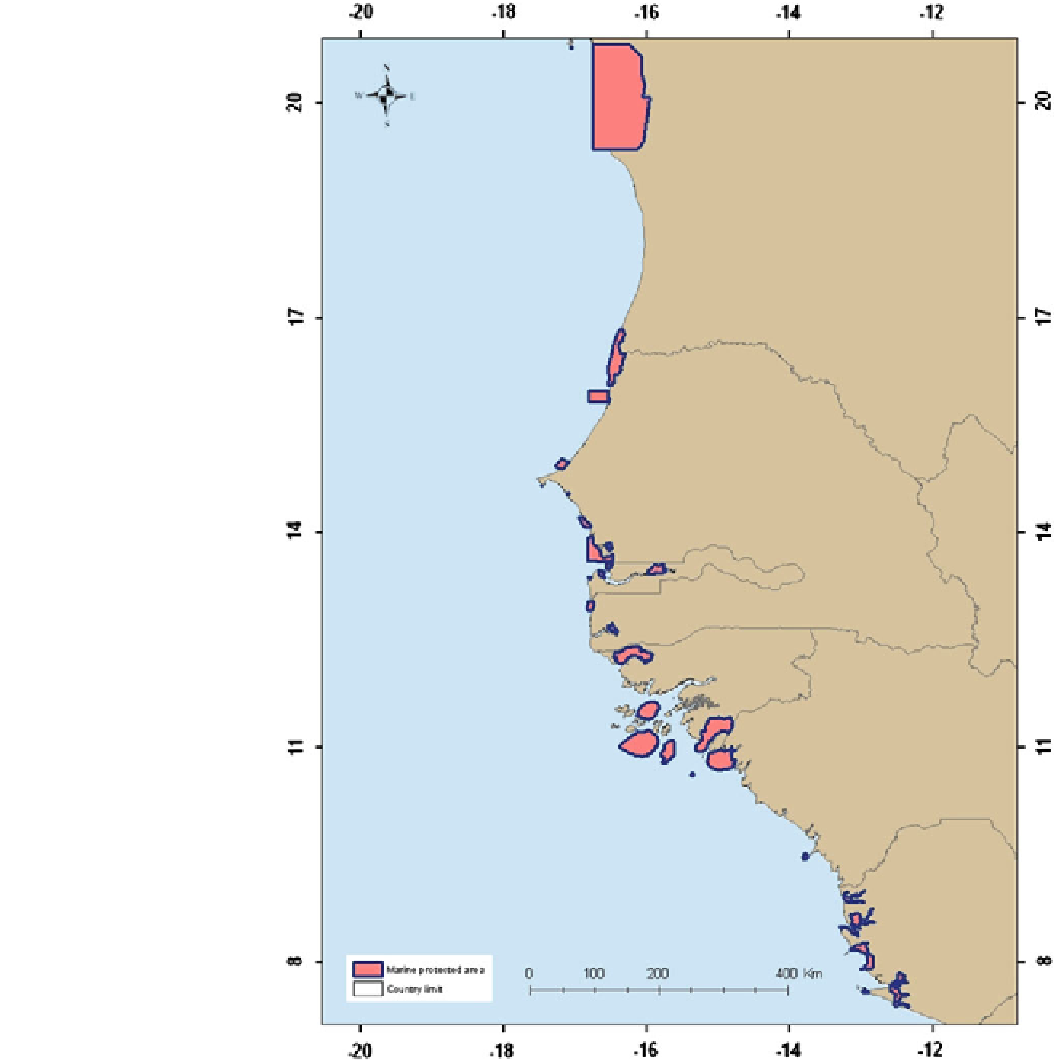Environmental Engineering Reference
In-Depth Information
Fig. 6
Map of the RAMPAO
MPA members
important strategy for tipping the balance in the degradation
of our natural resources. An international review of regional
and national MPA networks found that regional (multi-
country) networks tend to progress best when operating
under a coherent and robust coordinating framework and
when national parties demonstrate commitment through
treaties or other agreements (UNEP-WCMC
2008
). In 2010,
the RAMPAO gained the support of 15 national fisheries
and environmental ministers, thus improving its legitimacy
in negotiating and facilitating regional change. Because the
RAMPAO encompasses both human and ecological con-
cerns
ecological systems, the network is better equipped to
guarantee long-term sustainability than would a single
MPA, which is particularly important for the contiguous
mangrove habitat that spans the countries of Mauritania,
Senegal, Gambia, Guinea, Guinea Bissau, and Sierra Leone.
According to the RAMPAO Secretariat, 24 MPAs in the
network distributed in 5 countries (Mauritania, Senegal,
Gambia, Guinea, and Guinea Bissau) identify mangroves as
key habitats in their management plans. In a survey con-
ducted by the Secretariat in 2009, 12 of these MPAs
reported habitat degradation rates ranging between 10 and
30 % (RAMPAO
2010
). Table
1
shows the proportion of
and
touches
the
temporal
and
spatial
scales
of

Search WWH ::

Custom Search